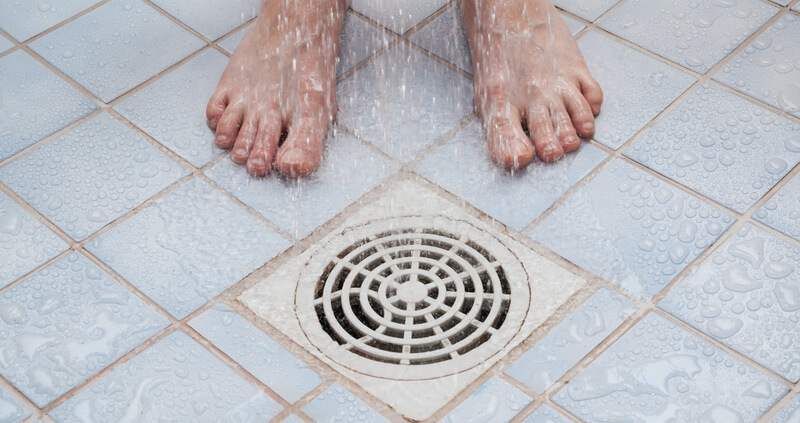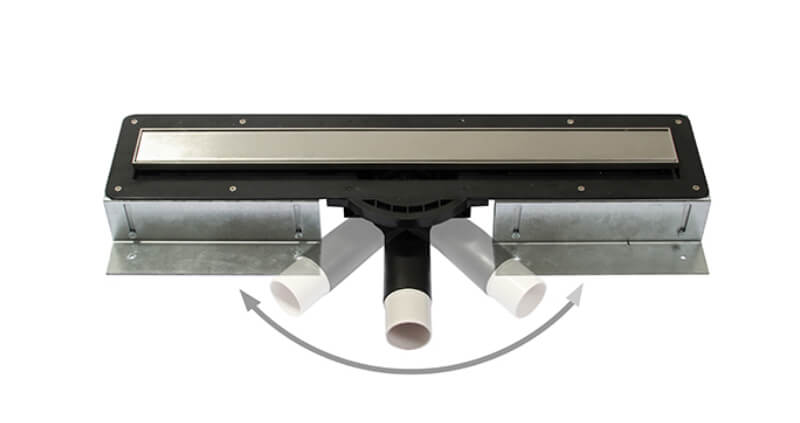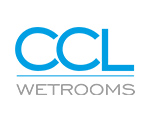
To get the best out of any shower you’ll need the right shower drain. An effective shower drain ensures wastewater flows freely away and doesn’t escape onto your bathroom floor.
Choosing the wrong drain can affect the performance of your shower and leave your bathroom floor in a soaking mess.
When showers don’t drain properly the water level rises and, before you know it, you’re ankle-deep in water. This can cause even greater problems down the line including mould and mildew growth and, worse still, a leaky bathroom.
To avoid an absolute catastrophe, follow this simple guide to selecting the correct type of shower drain.
What are the Different Types of Shower Drains?
There are two main types of shower drains – point and linear. However, each type of shower drain includes several variations to suit every bathroom scenario. This offers much greater functionality, especially for bathrooms with varied design and architectural obstacles.
No matter what type of shower drain you purchase, they have the same purpose and function – to connect shower plumbing to the nearest plumbing pipe so that wastewater empties into the drainage system. Installing the correct shower drain will provide effective drainage, protect your bathroom floor, and prolong the life of your shower.
When choosing your shower drain you should always consider the flow rate of wastewater. Where there is too much wastewater, the drain will struggle to cope resulting in a rising pool of water in the shower base. As a worst-case scenario, this can encourage grime within the pipes to surface and settle on the shower floor.
Point shower drains
A point drain is a standard option for many shower installation projects. The design can be round or square and they usually sit in the centre or corner of a shower tray.
Point drains work in a similar way to a funnel by emptying water that collects from a gradual slope in the shower floor from all four sides. Some point drains like our Solo4 have been specifically designed for use on a variety of floor surfaces including concrete and screeded floors offering you more choice when designing your bathroom or wetroom.
Point drains are simple to clean and save on space, making them a popular choice in many homes. They are most often found in older showers as installation takes more time than it does with linear drains. For example, point drains often require tiles to be cut at specific angles for them to work efficiently.
Although they generally have less surface area than linear drains for water to drain through, point drains provide fast drainage. One of the biggest advantages of point drains is their price. They are generally cheaper than linear drains as they contain less stainless steel and are often easier to install, a big win for those on a budget.

Linear shower drains
A linear drain is a long, narrow drain that is also referred to as a trench drain, line drain, slot drain, channel drain or strip drain.
With linear drains the shower floor slopes gradually towards the drain which prevents water from forming in a pool. They also have a large surface area which supports effective drainage by diverting water more readily. Linear drains fit flush with the floor and neatly slot into the tile structure so there is no need to disrupt the overall design of your shower. They are popular with developers when building flats and apartments as they reduce the depth of drainage required and the height between floors.
Linear drains come in a variety of lengths and are usually installed in the floor next to the shower door, or on the opposite wall. They are relatively simple to install as they only need a single gradient to support water flow, meaning less installation work and tile cutting.
The ‘modern’ design of linear drains also makes them a popular choice for new homes and bathroom renovations due to their contemporary styling.
Contemporary tile-in shower drains are similar to linear drains in style but require a different installation process. They can be almost fully hidden by tiles but allow for effective water drainage. However, tile-in shower drains require regular maintenance to prevent clogging which is done using a special tool to access the drain and removable basket.
Key Considerations When Buying a Shower Drain
Before you purchase your shower drain you should think about a number of factors that will influence your decision.
Shower drain size
Ensuring the correct size should be your first consideration as this can affect the drain’s performance. There are a wide selection of shower drains available, so finding the right size and design to suit your needs and taste shouldn’t be too difficult.
Shower drainage efficiency
You want your wastewater to flow quickly down your shower drain for maximum performance. Drainage speed will affect how quickly water enters the drain, so choose a drain that can deal with your all shower’s wastewater.
Shower drain maintenance
Cleaning your shower drain is important to ensure its optimum performance and longevity are protected. Some options may include a specialist cleaning kit, while others are simpler to clean and can be washed in a sink with soap and water. Failing to clean your shower drain regularly can cause the drains and pipes to clog with soap and debris resulting in unwanted water pooling.
Which Shower Drain is Easier to Maintain?
Linear drains are relatively simple to install as only one gradient is needed for the shower to work efficiently. The shower floor slopes gradually and evenly towards the drain, so wastewater flows freely away.
Installing a linear drain also means there is no need to cut up tiles which can damage the format and design of your shower. A linear drain slots directly into your tile structure whereas a point drain does not. However, some linear drains can be difficult to access which can make the cleaning process problematic.
Over time your linear or point shower drain may experience problems with slow draining, clogging, foul smells, or standing water. While it is possible to rectify these with a common plunger or snake drain, sometimes you may require the services of a plumber.
Ignoring shower drain problems or resorting to strong and potentially harmful cleaning chemicals can damage drainage pipes and make the problem worse. In this scenario it is advised to hire a professional plumber with specialist cleaning and maintenance tools to resolve the problem and return your shower drain to full functionality.
Shower Drains for Wetrooms
Wetrooms also require the correct drainage system to work efficiently. Where a traditional, enclosed shower relies on a shower tray, a wetroom floor is designed to gradually slope towards a fast flow linear or point drain within a fully waterproofed area.
It is essential to ensure your wetroom floor has a gentle and consistent gradient to allow water to flow easily towards the drain and avoid water pooling and potential problems with dampness and mould. Adding a splash screen to your wetroom will also stop water from splashing, keeping the rest of the room dry.
If your wetroom has a concrete floor you will need to make room for the drain and plumbing pipes. This may involve removing some concrete to create enough space for the drain and pipework. Similarly, if you have a wooden floor you may need to remove floorboards or raise the floor so the drain sits flush with the rest of the wetroom floor.
Almost all wetrooms are designed so that a linear or point drain can fit within the floor itself. Linear drains are the most popular choice for wetrooms unless there is an obstruction under the floor and a point drain is more practical.
Do You Need Help Choosing The Right Type of Shower Drain?
Our team of expert designers at CCL Wetrooms will guide you through the process of selecting the right shower drain that suits your needs. Get in touch today.









